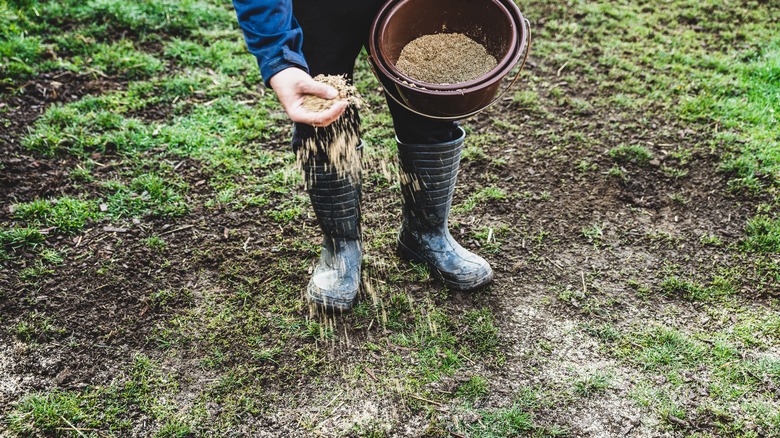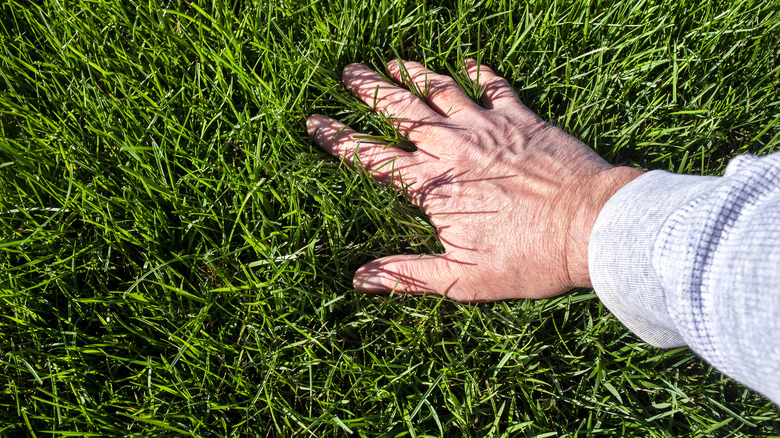A lawn that’s patchy, brown, and dying doesn’t make for the best window view nor first impression. Maybe you’ve tried bringing it back to life with various fertilizers only to see your efforts fall in vain. If so, it could be time to try a more involved tactic: reseeding.
As the name implies, reseeding a lawn means to spread new grass seed on top of existing, damaged grass. This act serves as a reset of sorts. When done properly, reseeding will spark life back into a lawn, changing a brown and barren abode to a lush landscape. It’s a process that seems like the perfect cure-all, but it’s one that can cost a pretty penny.
Many factors go into determining the final cost to reseed a lawn, with the scale ranging from a few hundred dollars to several thousand. The national average sits at just over $1,000, including labor. You can save a bit by doing the work yourself but just know the job can be quite intense. The reseeding process often requires more than just spreading seed, which leads to additional labor, time, and, ultimately, costs.
Factors that impact reseeding costs

One of the most costly contributors in the reseeding total will be the grass seed itself. Among the most popular types are Bermuda, fescue, Bahia, Kentucky bluegrass, and centipede. The two former options, Bermuda and fescue, are typically the most affordable. Some brands offer it as low as $2 to $4 a pound. Bahia and Kentucky bluegrass are a bit higher, with the cheapest brands going for $6 to $8 per pound. The average starting price for a pound of centipede grass is about $10.
Here’s the thing, though. Choosing seed type based on price per pound alone won’t necessarily net you the best deal. A pound of fescue grass seed, for example, will cover about 200 square feet whereas a pound of centipede can cover 20 times that much. That’s why you have to carefully consider the area you want to reseed. Larger lawns may actually cost less in the long run when covered in a higher-priced seed.
Another major cost to consider when reseeding a lawn is labor, including work before and after the seed is laid down. Yards in particularly bad shape may need dead grass, weeds, or leaves removed and the soil tested, amended, or aerated ahead of the reseed. After reseeding, lawns need to be fertilized and watered well. Hourly rates for professional landscaping teams range anywhere from $50 to $100. That price goes up if the yard is vast or the work extensive. Some companies may offer their services in a package deal, though.
Reseeding vs. overseeding

When planning your reseeding efforts, you may hear the terms reseeding and overseeding used interchangeably. The two acts have key differences, though, and understanding those differences can help in the budgeting process. Reseeding is performed on brown grass that has made no effort to turn back green or grass that has died completely. It’s essentially a revival effort. Overseeding, on the other hand, is more of a maintenance effort and is routinely used to thicken existing, lively grass.
Unlike reseeding, a yard destined for overseeding doesn’t need nearly as much prep before the seed dispersal. This makes it a much easier task to undertake on one’s own and often a cheaper one. That said, overseeding is usually performed across an entire yard to create a lush, even landscape. Reseeding, however, can be done in sections to address only the problem areas of a yard. Once a lawn has been successfully revived through reseeding, it can be overseeded semi-regularly to continue promoting a healthy outdoor environment.




